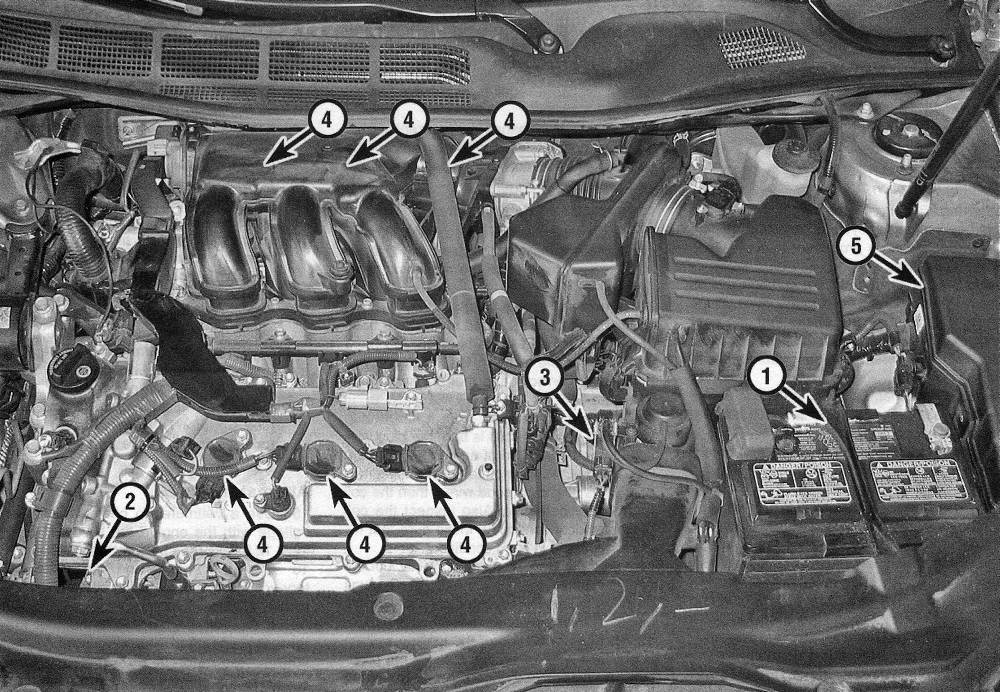Engine electrical systems
General information
Charging voltage — 13.5 to 15.0 volts
Standard amperage:
— No load — 10 amps or less
— With load — 30 amps or more
Ignition system
1. The electronic ignition system consists of the Crankshaft Position (CKP) sensor, the Camshaft Position (CMP) sensor, the Knock Sensor (KS), the Powertrain Control Module (PCM), the ignition switch, the battery, the individual ignition coils, and the spark plugs.
For more information on the CKP, CMP and KS sensors, as well as the PCM, refer to Chapter Emissions and engine control systems.
Charging system
2. The charging system includes the alternator (with an integral voltage regulator), the Powertrain Control Module (PCM), the Body Control Module (BCM), a charge indicator light on the dash, the battery, a fuse or fusible link and the wiring connecting all of these components. The charging system supplies electrical power for the ignition system, the lights, the radio, etc.
The alternator is driven by a drivebelt.
Starting system
3. The starting system consists of the battery, the ignition switch, the starter relay, the Powertrain Control Module (PCM), the Body Control Module (BCM), the Transmission Range (TR) switch, the starter motor and solenoid assembly, and the wiring connecting all of the components.
Precautions
4. Always observe the following precautions when working on the electrical system:
a) Be extremely careful when servicing engine electrical components. They are easily damaged if checked, connected or handled improperly.
b) Never leave the ignition switched on for long periods of time when the engine is not running.
c)Never disconnect the battery cables while the engine is running.
d) Maintain correct polarity when connecting battery cables from another vehicle during jump starting — see the «Booster battery (jump) starting» Section at the front of this manual.
e) Always disconnect the cable from the negative battery terminal before working on the electrical system, but read the battery disconnection procedure first (see Battery — disconnection and reconnection).
It’s also a good idea to review the safety-related information regarding the engine electrical systems located in the Safety first!
Section at the front of this manual before beginning any operation included in this Chapter.
Electrical system components — four-cylinder models
1 Battery
2 Alternator
3 Starter (under air inlet housing)
4 Ignition coils
5 Underhood fuse/relay block

Electrical system components — V6 models
1 Battery
2 Alternator
3 Starter (under air inlet duct and air filter housing)
4 Ignition coils (back three under intake plenum)
5 Underhood fuse/relay block
